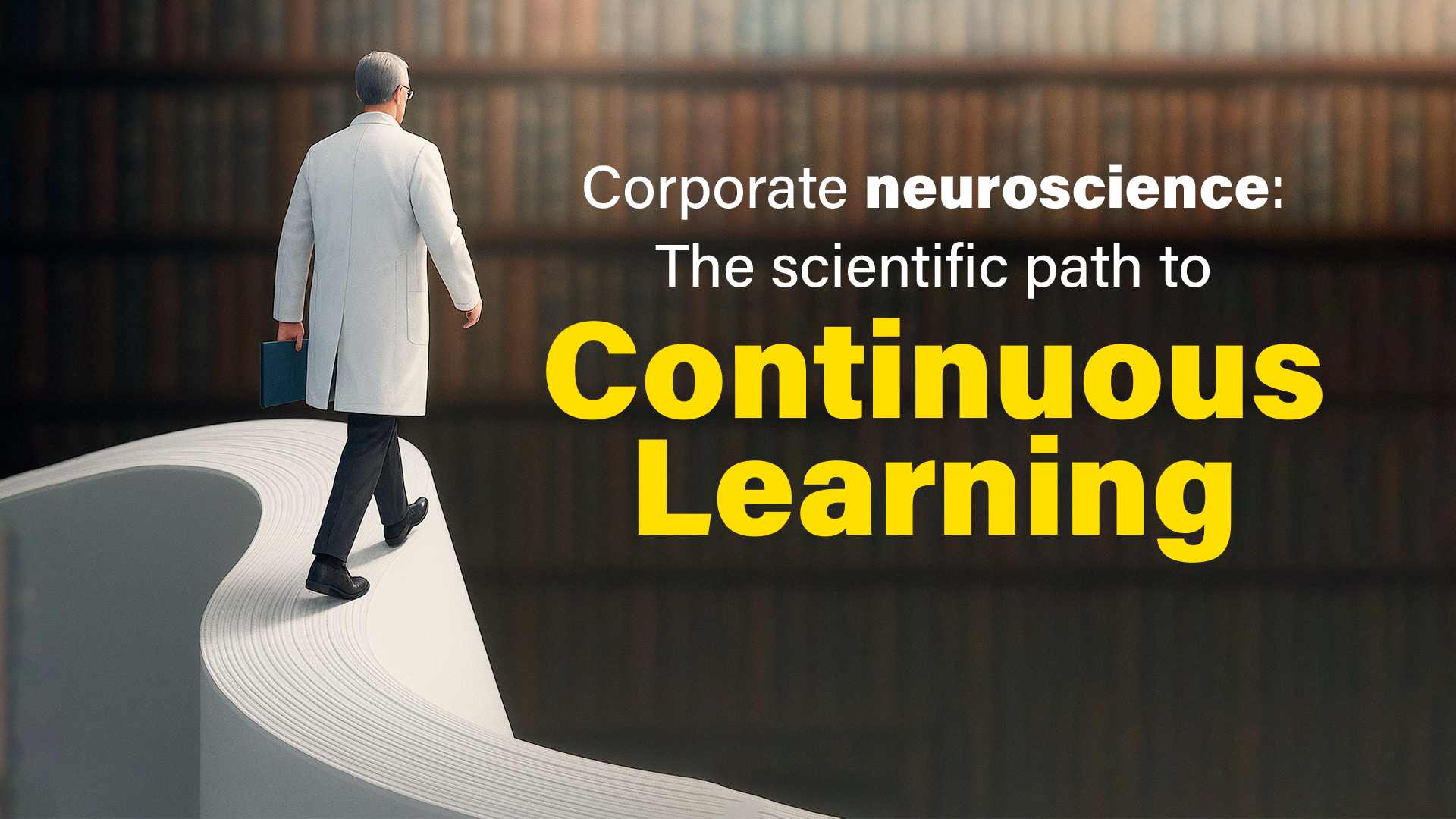
Why Corporate Neuroplasticity Is the Future of Business Strategy
In today’s competitive corporate world, success is less about having more resources or market share and more about the ability to adapt, learn, and respond to constant change. While this may sound like a purely strategic matter, neuroscience confirms that the foundation for this adaptability lies in something far more fundamental: corporate neuroplasticity.
A recent study published in the Journal of NeuroEngineering and Rehabilitation has revealed surprising findings on how the brain can be “primed” to respond more effectively to challenges and learn faster — even hours after a single targeted intervention. Although this research was conducted in a controlled scientific setting, its implications for leaders, teams, and organizations are clear: there are proven ways to design training and experiences that dramatically improve adaptability and innovation.
From Neuroscience to the Boardroom
The study, led by Stefan Vestring and colleagues at the University of Freiburg, investigated the effects of transcranial direct current stimulation (tDCS) on synaptic plasticity — the brain’s ability to form and strengthen neural connections. In simple terms, synaptic plasticity is the foundation for learning, skill acquisition, and adaptive thinking.
The most striking discovery? A single, continuous 20-minute session of targeted stimulation significantly boosted the brain’s ability to adapt and learn, with effects lasting up to six hours after the session.
In business terms, this is equivalent to discovering that a single, well-designed strategic meeting can have more long-term impact than a series of unfocused gatherings. It challenges the “more is better” mindset and instead points toward precision and design as the true levers of transformation.
The Science Behind Lasting Change
The research compared several stimulation protocols:
- A single 20-minute session with the anode placed over the primary motor cortex.
- Multiple short sessions with breaks in between.
- Sequential protocols with polarity changes to test combinations.
The results were clear: the single, focused session produced the most significant and lasting improvement in the brain’s ability to adapt. Shorter, repeated sessions not only failed to outperform it but sometimes reduced responsiveness.
Translated to the corporate arena, this finding reinforces that intensive, targeted training programs often deliver more value than extended, fragmented ones.
Corporate Neuroplasticity as a Competitive Advantage
If we extend the concept of neuroplasticity to organizations, we see a direct parallel:
- A brain with high neuroplasticity adapts better to unexpected challenges.
- A company with high corporate neuroplasticity adapts faster to market shifts, crises, and opportunities.
This means that corporate development strategies should focus not only on transferring knowledge but also on training the ability to learn, unlearn, and relearn. The study proves that the brain can be primed to learn better — a concept that can be applied to leadership development, change management, and innovation strategies.
Imagine applying this science to corporate leadership:
- Before high-stakes innovation sessions, use exercises that activate focus and mental flexibility.
- Design high-intensity, high-relevance training workshops instead of spreading content thin over months.
- Prime teams mentally before key meetings to maximize creative and strategic thinking.
What Businesses Can Learn from the Study
1. Duration Matters More Than Quantity
In the study, a single 20-minute session outperformed more complex schedules. In business, a short but impactful intervention can produce more change than drawn-out programs without clear focus.
2. Intensity and Focus Beat Dispersion
Just as continuous stimulation was key in the study, concentrated effort on a specific goal in business leads to deeper, more lasting results.
3. Preparation Before Execution Is Essential
The brain adapted better when primed effectively. Likewise, preparing a team with context, clarity, and purpose before a project greatly enhances success.
4. Protocol Design Shapes Results
In neuroscience, electrode placement changes outcomes. In business, the “protocol” is the design of meetings, processes, and strategies — small adjustments can make a big difference.
5. Real Impact Is Measured Later
Effects in the study emerged hours later. In business, true results often appear days or weeks after an initiative. Patience in evaluation is key.
From Brain Science to Corporate Strategy
The central takeaway is that lasting transformation comes from interventions that trigger plasticity, not just more information. This aligns perfectly with the modern corporate challenge: building leaders and teams who can adapt in real time.
A leader who understands corporate neuroplasticity can:
- Structure meetings to activate creativity and critical thinking.
- Introduce routines that mentally prepare teams for change.
- Prevent cognitive fatigue by avoiding unnecessarily long and unfocused sessions.
Practical Applications of Corporate Neuroplasticity
Innovation and Creativity:
Before brainstorming, incorporate mental warm-up exercises that stimulate focus and neural connections.
Corporate Training:
Favor immersive, high-intensity workshops over diluted, long-term courses. Evidence shows concentrated learning is more likely to stick.
Change Management:
Before rolling out a new strategy, prime teams with activities that foster curiosity and openness to change.
Executive Performance:
Introduce strategic breaks before major decisions to activate clarity and adaptability.
The New ROI Is in Corporate Neuroplasticity
In a world where markets shift faster than strategic plans, an organization’s survival depends on its ability to learn and adapt. This study on tDCS and neuroplasticity serves as a reminder that the greatest asset a company has is the adaptability of its collective brainpower.
Investing in corporate neuroplasticity — through neuroscience-based training, conscious leadership practices, and stimulating work environments — is an investment in long-term performance.
Just as a single well-applied stimulus can enhance the brain for hours, a well-designed corporate strategy can fuel performance and adaptability for years.
📄 Reference: Vestring S. et al. (2024). Lasting effects of transcranial direct current stimulation on the inducibility of synaptic plasticity by paired-associative stimulation in humans. Journal of NeuroEngineering and Rehabilitation, 21:162. https://doi.org/10.1186/s12984-024-01459-x
Continue reading more articles: https://neurobusiness.us/blog/


